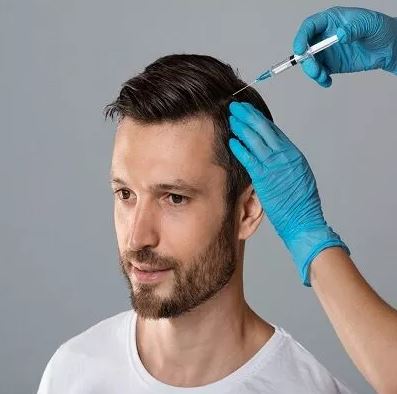Tips To Overcome The Challenges Of Pediatric Clinical Trials

There is an urgent need to speed up the development of new and existing treatments to address childhood illnesses worldwide. Trials involving children can be difficult and complex. Concerns of parents/caregivers and young patients are a few of these, along with informed consent and health literacy. Regulatory, methodological, ethical, and administrative concerns can also be present.
Pediatric Clinical Trials must overcome many challenges that only sometimes arise in trials for adults. Therefore, pediatric trials frequently take longer than adult trials and have a higher failure rate.
The development of treatments for pediatric CTs may be the most difficult because the risk is higher. Coordinating the schedules of children and their guardians for travel and trial site visits presents challenging logistical challenges.
During a clinical trial, kids are developing and beginning to form their own opinions. For instance, there can be a significant difference between a one-year-old and the same child at age six.
It’s crucial to pick the right CRO’s (Contract Research Organizations) with experience running successful pediatric trials and knowledge of these tactics. These four techniques, however, can make it simpler to sign up trial participants and complete successful trials.
Reserve Budget For Patient Recruitment And Trial Advertising
Adults are typically easier to recruit for trial studies than children, and getting enough participants to support an investigation can be even more challenging. Parents should refrain from subjecting their kids to extensive research or treatments that are still unproven to be effective.
When it comes to treating rare diseases, where there aren’t many other options, there might be an exception to the rule. However, persuading parents to sign their kids up for trials is challenging because most parents worry about the trials’ outcomes and safety.
Budgets for marketing and advertising should be set aside to encourage more children to participate in clinical trials. Setting aside funds to create print, radio, television, and social media advertisements can help draw attention to trials and facilitate recruitment.
It will cost more to hire recruiters to assist families who respond to advertisements, respond to their inquiries, and sign up trial participants. For studies to be financially viable, pharmaceutical and biotech companies must set aside money for trial advertising and patient recruitment.
Require Approval Only From One Parent
Children must have parental consent to participate in a clinical trial because they are not of legal age. In many circumstances, getting permission from two parents (rather than just one) can be challenging.
To make the recruitment process more accessible, trials can be designed to require just one parent or guardian to offer consent to participate.
Challenges Associated With Developing Pediatric Medical Devices
The market dictates the majority of the difficulties in creating pediatric medical devices. Of course, we all want the best care for our children, but the relative market size is smaller than that for adults, which is one reason some device manufacturers steer clear of it.
The development of technology for children faces technical difficulties as well. For instance, this patient population overgrows, leading to potential long-term issues with implantable devices that must be monitored over time to assess their safety and efficacy. Therefore, clinical testing for pediatric devices may take longer and cost more to ensure their safety.
Connected devices and remote monitoring are experiencing a boom in innovation, which may spread to pediatric applications. A pediatric monitoring device created by Vitls Inc. that enables accurate real-time monitoring of patient vitals is one recent example.
Additionally, technology should consider “kids being kids” Since they are frequently more active than adults, the device’s safety and durability may face particular difficulties.
The FDA knows pediatric device difficulties and potential hesitation manufacturers may experience when pursuing these specialized products. The PMDSIA also led to the creation of the Pediatric Device Consortia (PDC) grant program, which supports the development of pediatric-specific devices. The program’s main objective is to introduce new pediatric devices to close clinical gaps in the market.
Each consortium participating in the program can provide manufacturers with advice in addition to funding, including help with clinical trials, regulatory strategy, value proposition validation, grant-writing, prototyping, and testing.
It’s also important to remember that some pediatric devices might be eligible for the FDA’s Humanitarian Device Exemption (HDE) program, which offers a streamlined regulatory process for devices meant to treat uncommon illnesses or conditions. This is one innovative approach to consider if you want to market a device that caters to a specific patient demographic, like pediatrics, more quickly.
Use Trial Timelines Based On What Works For Children
The availability of patients is yet another barrier to pediatric clinical trials. Due to their school schedules or even their parents’ jobs, children are typically less readily available than adults, which raises the question of when to conduct a study.
Trials can be scheduled during breaks throughout the summer, spring, or holidays to get around this. It might be necessary to schedule trials so that kids can take part after school and on weekends. When estimating the length of a study, it is crucial to be realistic. Shorter studies are preferable for pediatric patients.
A study may take place every weekend for three months. It depends on the course of treatment or the protocol’s specifics. Some studies may only call for a single outpatient visit, with the remainder of the study taking place at home through entries in a diary. Flexibility is essential when attempting to create appropriate trials for pediatric patients.
Pediatric trials may benefit from careful planning about enrollment, timing, and duration to reduce dropouts and increase trial completion rates. Long trials may be too much for pediatric patients and their families to handle. It’s crucial to remember that young patients might have a lower tolerance for complex procedures carried out throughout long treatment sessions.
Also Read: Why is Research Important in Dermatology?
Wrapping Up
Though the need for pediatric studies will only increase, it is optional for trial enrollment and recruitment to be challenging. A thriving pediatric trial can be designed with just a few straightforward tactics.






